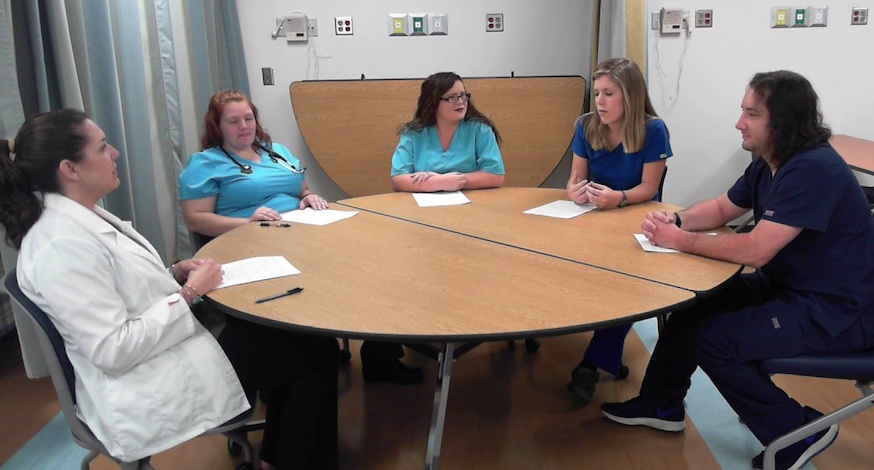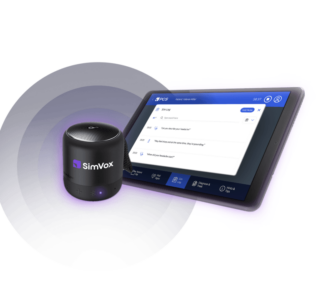Healthcare Simulation Prebriefing Checkoff Sheet Template
Prebriefing is an important component of healthcare simulation which should be planned along with the simulation scenario development and debriefing activities. Today, Kim Baily PhD, MSN, RN, CNE, previous Simulation Coordinator for Los Angeles Harbor College and Director of Nursing for El Camino College takes a look at pre briefing as well as provides a template document checklist to help ensure your success!
The International Nursing Association for Clinical Simulation and Learning (INACSL) addresses pre briefing in two standards. Criterion 7 of the Simulation Design Standard recommends that simulation-based experiences should begin with a prebriefing. Criterion 3 of the Facilitation Standard states that preparing learners for simulation activities should include preparatory activities and prebriefing. INACSL recommends that the pre-briefing should be written or recorded in an attempt to ensure standardization between groups of learners. This is particularly important when the simulation involves a high-stakes evaluation. More about the use of prebriefing from INACSL is covered below.
Careful scheduling of simulation is important to ensure that learners have the appropriate knowledge, skills, attitudes and behaviors associated with a particular simulation. For example, consider a GI bleed simulation. Learners may have received information related to care of a patient with a GI bleed however if the scenario includes a blood transfusion, and learners have not received information about transfusions or had the opportunity to familiarize themselves with blood administration, the simulation will turn into a skills lab. Students will likely be confused and or anxious since they do not have the appropriate knowledge or skills. Faculty should be instructed to notify simulation faculty if they change content or skills labs activities/dates.
Sponsored Content:
INACSL Standard of Best Practice: Facilitation Prebriefing References
- The facilitator has familiarized his/herself with all aspects of the intended simulation-based experience. This includes being familiar with the prebriefing and preparatory resources, the simulation-based experience itself and methods for cueing, and the selected debriefing and evaluation methods.
- Facilitation methods before the simulation-based experience include preparatory activities and a prebriefing to prepare participants for the simulation-based experience.
- Hold a prebriefing at a designated time before the simulation-based experience in which the amount of time may vary depending on the modality and complexity of the simulation-based experience. Minimally, the prebriefing should include:
- Discussing the detail and expectations of the simulation-based experience. The level of detail revealed depends on the purpose, goal, and/or objectives of the simulation-based experience.
- Providing participants necessary background information about the simulation-based experience. ○An orientation of participants to the simulation environment, modality for delivery of the simulation, manikins, and the equipment that can be used or not used.
- Providing clear descriptions of assigned roles for the scenario, whether as a direct care provider, as an observer, or as other assigned role characters.
- Discussing the process to contact others (as needed) during the simulation, and if appropriate, ways to seek further information.
- As appropriate, providing time for participants to prepare before the start of the simulation experience.
- Download the Printable Infographic and Learn more about the INACSL Standard for Facilitation here.
Healthcare Simulation Dictionary Definitions of Prebriefing (SSH)
- “An information or orientation session held prior to the start of a simulation activity in which instructions or preparatory information is given to the participants. The purpose of the prebriefing is to set the stage for a scenario, and assist participants in achieving scenario objectives”.
- “The time used by educators, researchers, facilitators, or staff to plan their roles prior to the simulation; suggested activities in a prebriefing include an orientation to the equipment, environment, manikin, roles, time allotment, objectives, and patient situation. For example: Before starting the simulation session, there is a prebriefing where the equipment and its capabilities are reviewed and they are reminded of the equipment available to them in the room (INACSL, 2013)”.
- “The collaboration and planning of co-facilitators/co-debriefers prior to the simulation activity”.
Recently researchers have attempted to more clearly define the steps and activities involved in prebriefing. Various terms such as orientation, briefing and planning phase are found in the literature. The downloadable template above lists some of these activities! All these items and more are linked on the prebriefing page below!
Download the HealthySim Prebriefing Template PDF Here!
Sponsored Content:
Prebriefing Template by HealthySimulation.com
Above you can download the free prebriefing template checklist from HealthySimulation.com, developed by Dr. Kim Baily. This checklist can serve as a reminder about the core functionalities and steps required to ensure for successful simulation activities. Items range from reviewing the code of conduct and confidentiality of simulation scenario, describing roles and expectations of roles to be assigned including confederates, reviewing required video or other audiovisual materials, as well as covers orientation to the manikin, sim room, equipment, supplies, medication administration/scanning equipment, and many more! Have other major areas that one should consider to add for a pre briefing checklist? Leave a comment below to share your best practices!
Visit our Prebriefing page to Learn More!
Today’s article was guest authored by Kim Baily PhD, MSN, RN, CNE, previous Simulation Coordinator for Los Angeles Harbor College and Director of Nursing for El Camino College. Over the past 16 years Kim has developed and implemented several college simulation programs and previously chaired the Southern California Simulation Collaborative.
Have a story to share with the global healthcare simulation community? Submit your simulation news and resources here!
Dr. Kim Baily, MSN, PhD, RN, CNE has had a passion for healthcare simulation since she pulled her first sim man out of the closet and into the light in 2002. She has been a full-time educator and director of nursing and was responsible for building and implementing two nursing simulation programs at El Camino College and Pasadena City College in Southern California. Dr. Baily is a member of both INACSL and SSH. She serves as a consultant for emerging clinical simulation programs and has previously chaired Southern California Simulation Collaborative, which supports healthcare professionals working in healthcare simulation in both hospitals and academic institutions throughout Southern California. Dr. Baily has taught a variety of nursing and medical simulation-related courses in a variety of forums, such as on-site simulation in healthcare debriefing workshops and online courses. Since retiring from full time teaching, she has written over 100 healthcare simulation educational articles for HealthySimulation.com while traveling around the country via her RV out of California.
Sponsored Content:




















